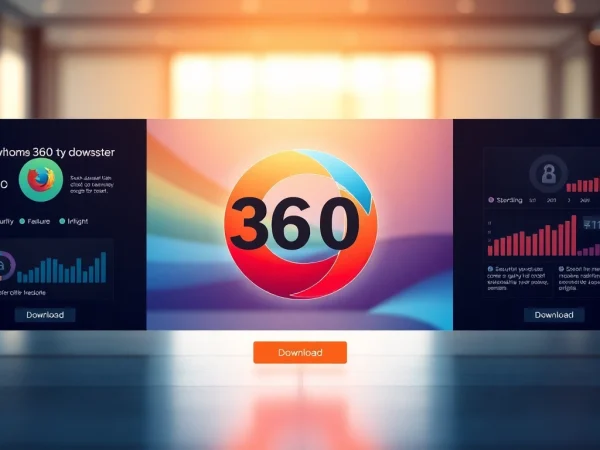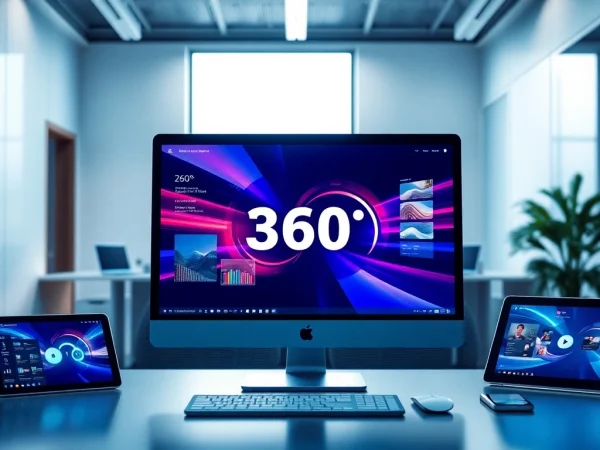Mastering Website Design: Essential Techniques to Create Engaging Online Experiences
Understanding Website Design Fundamentals
Website design is not merely about constructing visual layouts; it encompasses a complex blend of aesthetic, technical, and functional principles aimed at crafting an engaging online experience. As the digital landscape continues to evolve, the significance of effective website design cannot be overstated. At its core, website design serves as a bridge between the user and the content, shaping the way individuals interact with information in the digital realm. Understanding the fundamentals is vital for anyone looking to create successful online platforms.
Key Principles of Effective Website Design
Effective website design adheres to specific principles that not only enhance usability but also ensure a pleasurable user experience. Here are some key principles:
- Clarity: A clear website design allows users to navigate easily and find relevant information without confusion. It emphasizes simplicity to facilitate understanding.
- Consistency: Maintaining a consistent style in elements like fonts, colors, and layout contributes significantly to brand recognition and user retention.
- Visual Hierarchy: Organizing information in a manner that highlights the most crucial components first creates a logical flow, guiding users through the website seamlessly.
- Mobile Responsiveness: With an increasing number of users accessing websites from mobile devices, ensuring that designs are responsive across all devices is essential.
- Accessibility: The design should be inclusive, catering to all users, including those with disabilities. This can involve features like alt text for images and color contrasts that are conducive to visual impairments.
The Importance of User Experience in Website Design
User experience (UX) is at the heart of effective website design. A positive UX ensures that visitors can interact with the website smoothly, which increases the likelihood of user retention and conversions. To enhance UX, consider these aspects:
- Loading Speed: Websites that load quickly reduce bounce rates. Users are more likely to abandon sites that take too long to respond.
- Navigation: Intuitive navigation, such as clear menus and search functionalities, allows users to locate the information they seek effortlessly.
- Content Quality: High-quality, relevant content that addresses user needs significantly enhances their experience and bolsters trust in the brand.
Common Mistakes to Avoid in Website Design
Even seasoned designers can overlook critical aspects of website design. Here are common pitfalls to avoid:
- Neglecting Mobile Users: Failing to optimize for mobile devices can alienate a significant segment of your audience.
- Overcomplicated Design: Crowding the layout with too many elements can overwhelm users and obscure important information.
- Ineffective Use of Color: Misusing color combinations can detract from visibility and make the website less inviting.
Elements of a Successful Website Design
Building a successful website requires a keen understanding of its essential elements. Together, these components create a cohesive user experience that draws visitors in and encourages interaction.
Essential Visual Components of Website Design
Visual elements play a critical role in website design. They not only attract the eye but also facilitate communication. Here are the essential visual components to consider:
- Images and Graphics: High-quality images enhance aesthetic appeal and can convey messages quickly. Including infographics can simplify complex information.
- Typography: Choosing the right fonts impacts readability and overall design. Opt for styles that are easily readable and align with the brand’s voice.
- Whitespace: Effective use of whitespace enhances clarity and gives users’ eyes space to navigate comfortably through the content.
Incorporating Responsive Features for Modern Users
As access points for websites diversify, incorporating responsive features is paramount. This involves ensuring that designs adjust seamlessly across various devices. Techniques include:
- Fluid Grids: Utilizing a fluid grid design allows website components to resize proportionately within varying screen dimensions.
- Flexible Images: Implementing CSS techniques for images ensures they scale effectively without compromising quality.
- Media Queries: Using media queries in CSS helps tailor the layout and design aspects based on the specific characteristics of the device accessing the website.
Utilizing Color Theory in Website Design
Color is a powerful tool in website design that influences user behavior and perception. Understanding color theory can help convey the right message. Consider these strategies:
- Color Psychology: Different colors invoke different emotions. For instance, blue often represents trust and calmness, making it suitable for financial services, while bright colors can energize and attract attention.
- Contrast: Use contrasting colors for text and backgrounds to ensure readability and draw attention to calls-to-action.
- Brand Colors: Incorporate brand colors throughout the design for consistency and recognition among users.
Tools and Technologies for Website Design
In the landscape of website design, various tools and technologies facilitate the creation and optimization of effective websites. Utilizing the right resources can significantly streamline the design process.
Top Software Solutions for Aspiring Designers
For those looking to embark on a website design journey, several software tools can assist in crafting professional and appealing websites:
- Graphic Design Software: Programs like Adobe Photoshop, Illustrator, or Affinity Designer help create custom graphics and layouts.
- Website Builders: Intuitive platforms like WordPress or customizable site builders allow individuals with minimal coding experience to design and launch websites.
- Prototyping Tools: Software like Sketch, Figma, or Adobe XD enables designers to create interactive prototypes for testing and visualization.
The Role of Artificial Intelligence in Website Design
Artificial Intelligence (AI) is transforming website design with its capabilities to enhance customization and user experience. Key applications include:
- Personalization: AI can analyze user behavior to deliver personalized content, improving engagement and conversions.
- Chatbots and Assistance: Integrating AI chatbots can provide users immediate assistance, enhancing their experience and potentially increasing retention.
- A/B Testing: AI algorithms can automate A/B testing processes, optimizing designs based on real-time user interactions and feedback.
Integrating SEO Best Practices into Website Design
Creating a visually appealing website that is also optimized for search engines is paramount for visibility. Here’s how to effectively merge design and SEO:
- Meta Tags: Ensure that every page has unique meta titles and descriptions that utilize relevant keywords while appealing to potential visitors.
- Header Structure: Utilize headers (H2, H3, etc.) properly to structure content logically, which aids search engines in understanding the content hierarchy.
- Image Optimization: Use descriptive file names and alt text for images to enhance accessibility and improve search engine indexing.
Trends in Website Design to Watch
The field of website design is constantly evolving. Staying abreast of emerging trends can provide valuable insights for creating contemporary and engaging websites.
Emerging Design Styles Shaping Websites Today
As design aesthetics shift, several emerging styles are gaining traction among website designers:
- Dark Mode: The rise of dark mode designs not only enhances visual appeal but also reduces eye strain for users, particularly in low-light environments.
- Asymmetrical Layouts: Moving away from traditional grid patterns creates visually intriguing websites that draw attention and encourage exploration.
- Micro-animations: Subtle animations can enhance user interaction by providing visual feedback, making websites feel more dynamic and engaging.
The Impact of Minimalism on Website Design
Minimalism focuses on simplicity and clarity, stripping away unnecessary components. Key aspects of minimalist design include:
- Focused Content: Concentrating on essential elements allows the primary message to shine, reducing clutter and enhancing user understanding.
- Streamlined Navigation: Minimum navigational elements facilitate user movement through the site without distraction.
- Open Space: Ample whitespace contributes to a peaceful browsing experience, preventing overwhelming feelings in users.
Future-Proofing Your Website Design Approach
As technology evolves, future-proofing your design approach can ensure adaptability to upcoming trends. Consider these strategies:
- Scalable Design: Implement designs that can grow and evolve with your business or evolving user needs without requiring substantial overhauls.
- Regular Updates: Commit to regular assessments and updates based on user feedback, analytics, and changing industry standards to ensure continued relevance.
- Cross-Functional Teams: Collaborate with diverse professionals, including developers, marketers, and UX specialists, to create a holistic approach that encompasses various facets of design.
Evaluating Your Website Design Success
Measuring the success of your website design is crucial to understanding its effectiveness and areas for improvement. Employing specific metrics can guide your evaluation process.
Key Metrics for Assessing Website Design Performance
To objectively evaluate website design success, monitor these key performance metrics:
- Bounce Rate: A high bounce rate may indicate that visitors find the site unengaging or difficult to navigate.
- Average Time on Page: Analyzing how long users stay on specific pages can provide insights into content effectiveness.
- Conversion Rate: This metric indicates how well the site is meeting its goals, whether it’s signing up users, generating leads, or facilitating purchases.
Gathering User Feedback for Continuous Improvement
User feedback is invaluable for understanding real-world interactions with the website. Utilize methods such as:
- Surveys: Deploy surveys to gather insights directly from users about their experiences and suggestions for improvement.
- User Testing: Conduct usability tests with real users to observe their behavior and interactions, identifying pain points and areas for enhancement.
- Analytics Tools: Utilize tools like Google Analytics to track user interactions and gain insights into traffic patterns and engagement.
Case Studies of Outstanding Website Design
Examining case studies of successful website designs can provide valuable insights into effective strategies and implementations. Focus on:
- Design Rationale: Understand the reasoning behind design choices and how they cater to specific user needs.
- Performance Results: Analyze the results achieved post-implementation, such as improved user engagement or conversions.
- Challenges and Solutions: Learn how designers addressed specific challenges during the design process and their solutions, providing a roadmap for future projects.










